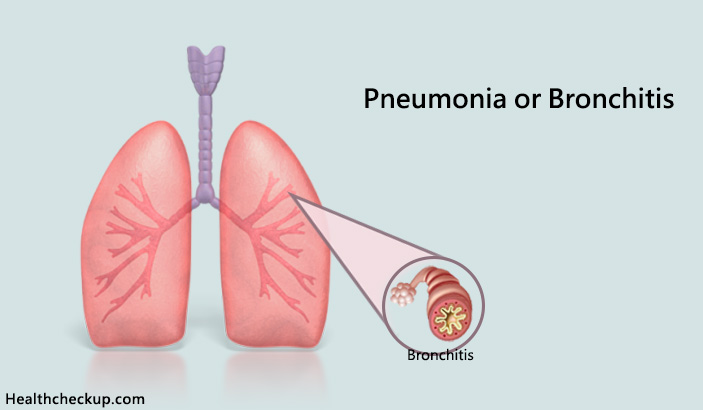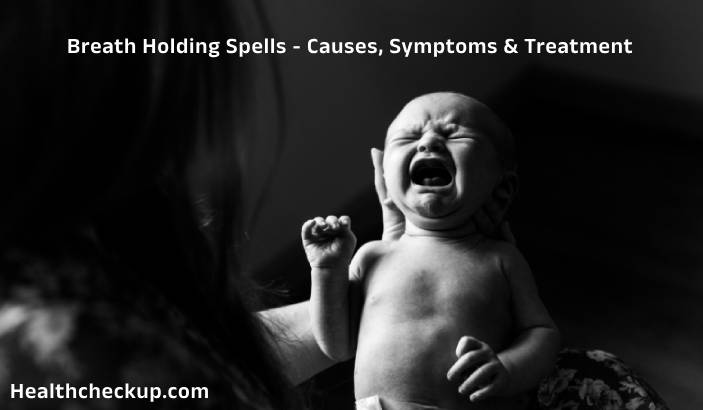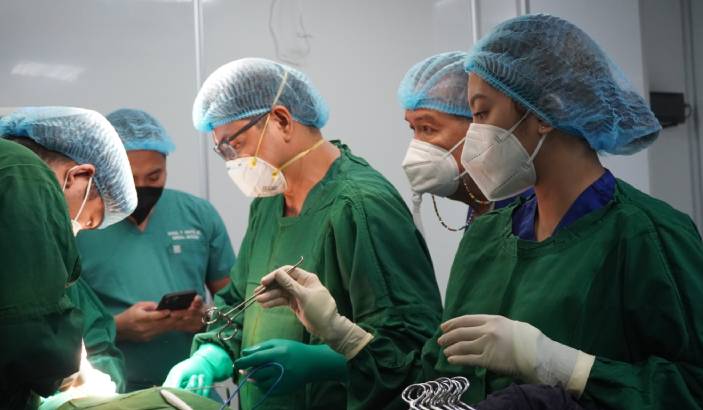Before beginning to explain how to know if you have pneumonia or bronchitis, briefing you about respiratory tract would be worthwhile. As we know, our airways can be divided into upper and lower respiratory tracts for the purpose of understanding.
The Upper Respiratory Tract Includes:
- Sinuses
- Nose
- Naso Pharynx
- Larynx
The Lower Respiratory Tract Includes:
- Trachea
- Bronchus
- Right and left bronchi respectively – These are divisions of the main bronchus. Bronchi enter into the lungs. The bronchus and bronchi are supported by rings of cartilage.
- Bronchioles – Smaller branches of bronchi within the lungs
- Alveoli – Bronchioles terminate in small air filled sacs
- Lungs – Right lung is divided into upper, middle and lower lobes. Whereas the left lung is divided into just two lobes as the upper and lower.
Some More Details about Our Respiratory Tract:
- The airways are lined extensively by smooth muscles, goblet cells which are responsible for mucus production and hair-like projections called Cilia. Goblet cells trap particulate matter or micro-organisms and ciliary movements help to push them out of the airways.
- The respiratory tract is studded with lymph nodes for effective drainage of infective organisms and toxins. The thoracic duct passes from near the trachea.
- Each part of the airway is rich in blood and nerve supply.
- The alveoli are mainly responsible for the gaseous exchange of oxygen and carbon dioxide.
- Pneumocytes within the alveoli are responsible for gaseous exchange and production of surfactant-a fluid which prevents the alveoli from collapsing.
- The lungs are covered externally by the parietal and visceral pleura. The pleural cavity contains pleural fluid which works as a shock absorber and a transporter of nutrients and fluids from and into the lungs.
- The lungs are protected by the rib cage therefore direct trauma to the lungs is a very rare occurrence.
To know if you have bronchitis or pneumonia, it is vital to know that both of these clinical entities are affections of the lower respiratory tract. Further details of this article will help you understand if you have pneumonia or bronchitis or if you have both at the same time and how to differentiate between the two.
What is Pneumonia?
Pneumonia is an acute infection of the lungs characterized by the presence of pus, blood or other fluids within the alveoli or the air sacs.
Collection of any sort of fluid inside the alveoli makes it difficult for the patient to breath. A cough occurs as a protective mechanism attempting to push infective material out of the lungs. Based upon the type of fluid collection and infective organism, color of sputum may vary.
What are the Causes of Pneumonia?
The table below will help you understand different types of pneumonia and how they are caused. Each type of pneumonia has plenty of causative organisms or mechanisms.
| Type of Pneumonia | Cause |
|---|---|
| Community acquired pneumonia | Streptococcus pneumoniae, Mycoplasma pneumoniae, H. influenza pneumoniae, Staph. Aureus pneumoniae, tuberculosis, legionella, klebsiella pneumoniae, Chlamydia, influenza, varicella zoster. |
| Hospital acquired pneumonia | Pseudomonas, Klebsiella, Legionella, Streptococcus pneumonia. |
| Aspiration pneumonia | Neurological illness like Parkinson’s, use of alcohol, sedatives and abuse of drugs, esophageal disorders. |
| Pneumonia in immune-compromised | Pseudomonas, Klebsiella, E.coli and Staph. Aureus. |
| Recurrent pneumonia | Bronchial Obstruction – Narrowing of airways, adenomas, cancer Immune deficiency status, bronchiectasis, cystic fibrosis, chronic bronchitis. |
| Unusual pneumonia | Tuberculosis, salmonella typhi and paratyphi, SARS, H1N1, leptospirosis |
Streptococcus Pneumonia – responsible for maximum cases of pneumonia and often results in severe forms of pneumonia.
H. Influenza Pneumonia – occurs commonly in patients having chronic underlying lung affections. Legionella – air conditioners are the most common source.
What are Signs and Symptoms of Pneumonia?
1. Constitutional symptoms like body ache, fever with chills and rigours, night sweats, disorientation and confusion in elderly patients.
2. A cough with expectoration which is purulent or containing blood.
3. Difficulty in breathing.
4. Pain in the affected part of the lungs on breathing or coughing.
5. Occasionally nausea, vomiting and loss of appetite may be present.
What is Bronchitis?
Bronchitis may be acute or chronic. Chronic bronchitis is considered as a component of Chronic Obstructive Pulmonary Diseases (COPD). Multiple environmental, dietary and genetic factors work in causation and progression of this disease. Acute bronchitis is acute infection and inflammation of the bronchial tubes.
What are the Causes of Bronchitis?
1. Infection – Bacterial, viral and fungal infections of the nose, sinuses or lungs.
2. As a complication of other illnesses like measles, chicken pox or whooping cough.
3. Exposure to irritants like dust, toxins and chemicals.
4. Inhalation of allergens like dust, pollen, animal dander, hay and certain food substances.
What are The Signs and Symptoms of Bronchitis?
1. Fever with chills, body ache, sweating and palpitations.
2. A cough with expectoration which is scanty initially and later becomes purulent.
3. Difficulty in breathing while coughing.
How do you Know If you have Bronchitis or Pneumonia?
The most important differentiating factors between the two are:
| Pneumonia | Bronchitis |
|---|---|
| Infection of alveoli | Infection of bronchi |
| Most important symptom is shortness of breath | Most important symptom is a cough and wheezing |
| Expectoration is purulent of blood-tinged | Expectoration is white or mucopurulent |
| Low oxygen saturation | Low or normal oxygen saturation |
| Rales (crackles) heard on auscultation | Rhonchi and wheeze heard on auscultation |
| Can occur due to bacteria, viruses, fungi, tuberculosis and aspiration or radiation. | Maximum cases are viral. Bacterial, allergic and exposure to toxins and chemicals can cause bronchitis |
A chest x-ray is commonly done to differentiate between the two. Chest x-ray of a patient having pneumonia shows a white patchy area of consolidation of affected part of the lung. The above differentiating features between the two clinical conditions will help you understand if you have pneumonia or bronchitis.
Frequently Asked Questions (FAQs)
Can Bronchitis turn into Pneumonia?
Yes. Bronchitis can turn into pneumonia
- Causative organisms which infect the bronchi can potentially affect even the alveoli.
- This is because alveoli are responsible for gaseous exchange and are surrounded extensively by blood vessels and capillaries.
- The entire respiratory system is also surrounded by lymphatics.
- Any infective organisms can travel to the alveoli via blood or lymph.
Can I have Bronchitis and Pneumonia at the same Time?
Yes. It is possible to have pneumonia and bronchitis at the same time. But to say so, it is considered that a particular micro-organism can infect one lung completely, right from the bronchus to the alveoli. Such cases are often complicated and serious ones.
What is Walking Pneumonia?
- The causative organism is Mycoplasma pneumonia.
- It is transmitted from person to person by droplet infection. It can affect people of all ages.
- Walking pneumonia occurs commonly in closed environments like colleges, classrooms and hospitals.
- Signs and symptoms of this type of pneumonia develop slowly over a period of few days to months and can be treated on the basis of out-patient department treatment.
- Symptoms initially appear like the common cold. A cough is dry and unproductive.
Medically Reviewed By
Dr. Himanshi is a Homoeopathic consultant and currently working as a lecturer in Post-graduate faculty of Homeopathy, Parul University, Vadodara. Completed BHMS and MD in Homeopathy in January 2018 and also has a clinical experience of about 6 years. Personal interests include reading, spending time with family and traveling.








